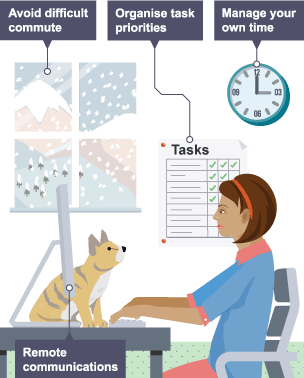Impact on Employment 💼
1/11
Earn XP
Name | Mastery | Learn | Test | Matching | Spaced |
|---|
No study sessions yet.
12 Terms
Job displacement
When an employee is removed from their job and replaced
Impact on job displacement
Manual work is now done by computer-controlled machines e.g self-checkouts
Repetitive/ tedious jobs can be carried out by robots e.g car manufacturing
Office jobs require more skill using generic software e.g databases and spreadsheets
Impact on work patterns
Low skilled jobs lost e.g robots in manufacturing/ warehousing
Automation of tasks e.g e-commerce
Skilled, well paying jobs created with more opportunities e.g emerging areas like AI
Robots increasing productivity as time is not wasted on simple tasks, can work 24/7 instead of 9-5
Reliance on technology
Working from home/flexible working hours thanks to teleworking
Reskilling
retraining to acquire skills needed to access the new roles

Teleworking
Using IT and telecommunications to work from home

Examples of teleworking
Web developers
Graphic designers
Accountants
Advantages of teleworking to an employee
Allows working from anywhere
Work at your own pace with flexible hours
Fewer cars on the road and less pollution
Saving money on transport to and from work
Disadvantages of teleworking to an employee
Feeling isolated from lack of communication and teamwork
Need an office at home, adding expenses
Distracting environment
Less motivation to work
Advantages of teleworking to an employer
Do not need to rent offices or pay maintenance
Employ a global workforce with cheaper labour
No need to hire staff like cleaners/ security
Less benefits (parking) and reduced conflict
Disadvantages of teleworking to an employer
More difficult to monitor employee activity
Potential for leaked information and security risks
More discipline towards employees
Less collaboration between employees
Upskilling
continuous training to carry out jobs and learn new skills e.g delivery driver becoming a drone operator

Downside of upskilling
employers need to offer training courses to improve retention levels